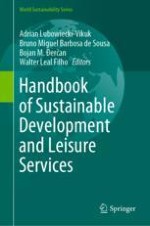2021 | OriginalPaper | Chapter
Smart Tourism: Towards the Concept of a Data-Based Travel Experience
Author : Magdalena Kachniewska
Published in: Handbook of Sustainable Development and Leisure Services
Publisher: Springer International Publishing
Activate our intelligent search to find suitable subject content or patents.
Select sections of text to find matching patents with Artificial Intelligence. powered by
Select sections of text to find additional relevant content using AI-assisted search. powered by
